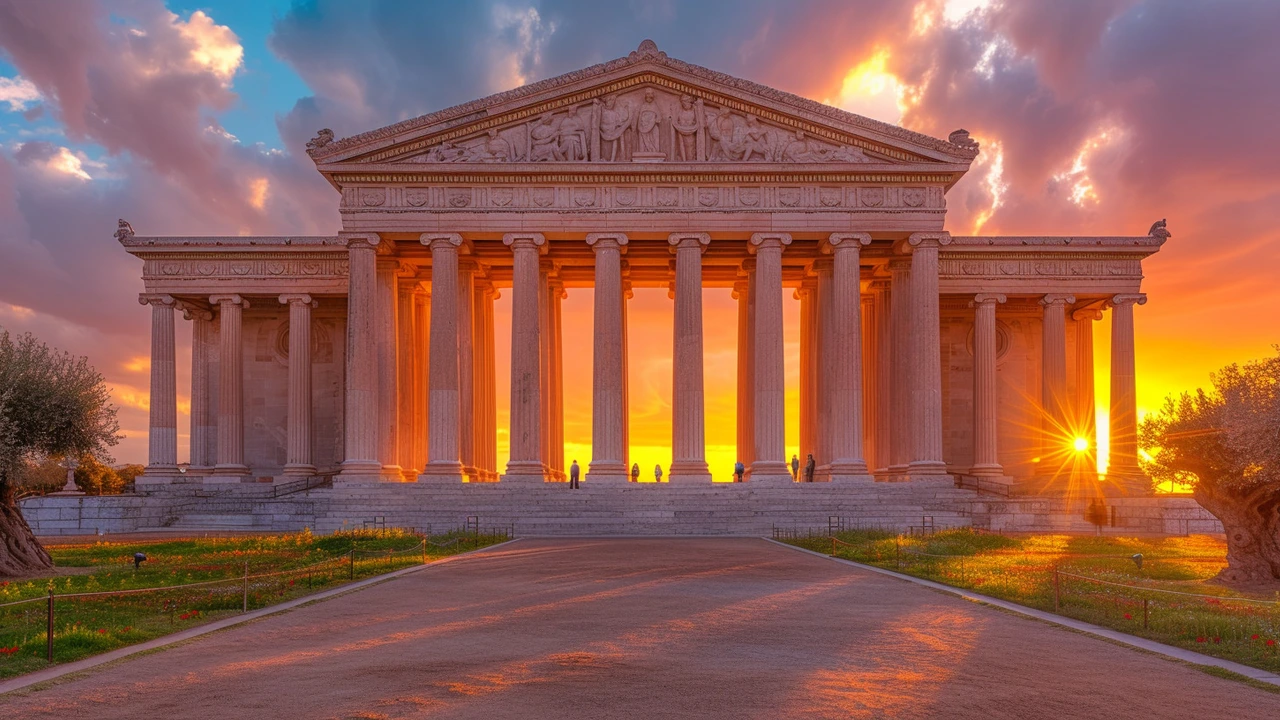Classical Elegance in Architecture and Home Design
Want a home or building that feels calm, balanced, and a little grand? Classical elegance does that by using clear proportions, quality materials, and thoughtful details. You see it in Greek Revival columns, Roman arches, Renaissance symmetry, and Beaux-Arts facades. It’s not about copying the past exactly. It’s about borrowing the parts that still work: order, scale, and craft.
Spotting classical features is easy once you know what to look for. Start with columns and pilasters. Doric, Ionic, and Corinthian capitals tell you a lot. Look for pediments above doorways, big cornices, and balanced windows. Arches and domes point to Roman influence, while rounded heavy walls often mark Romanesque buildings. Gothic Revival shows pointed arches and vertical emphasis. Byzantine sites add mosaics and glowing interiors.
If you want classical touches at home, start small. Use symmetrical furniture layouts and a restrained color palette—whites, warm creams, deep blues, and muted golds. Add crown moldings, a central medallion, or a simple cornice. Swap skinny modern baseboards for wider, shaped ones. Choose furniture with clean classical lines rather than heavy ornamentation. One or two statement pieces—an arched mirror, a carved console, or a column-like lamp—goes further than full-on period décor.
Fixing old classical buildings means paying attention to structure and materials. Bricks, ashlar stone, and lime mortar often need different care than modern concrete. Keep drainage working and replace broken cornices with matching profiles. When you can’t match materials, use reversible fixes so future restorers can undo changes. Simple maintenance prevents big problems later.
Want to see great examples? Walk city centers. Rome shows arches, domes, and engineering. Athens and American town halls show Greek Revival columns. Florence and Rome have Renaissance palaces and details in small alleys. Paris and New York reveal Beaux-Arts grand civic buildings. For interiors, visit churches for mosaics, palaces for Rococo rooms, and museums for restored period furniture.
You can mix classical and modern without a clash. Keep classical proportions and reduce ornament elsewhere. Use modern lighting and clean fabrics. Let a classical doorway or a row of columns become a focal frame for a modern sofa or art piece. That contrast often feels fresh and grounded.
Macklowe Art & Architecture has clear guides on Roman engineering, Greek Revival, Beaux-Arts details, and more. Pick the style you love and read specific posts for history, spotting tips, and real examples you can use at home or while traveling.
Quick checklist before a project: record existing moldings, measure window and door proportions, sample paint colors in daylight, choose hardware that matches metal finishes, and document any repairs.
On a budget, focus on paint, hardware, and trim. If you’re restoring, hire a conservator for structural issues and use specialist contractors for stone or lime work. Small, well-chosen changes give the biggest return.
Start with one room. Pick one classical idea and repeat it in small doses. Want examples? Check the tag posts for pictures, floor plans, and step-by-step tips that make classical elegance practical.

Beaux-Arts Architecture: An Ode to Classical Elegance
Hi there, fellow architecture enthusiasts! This post is going to take us on a journey through the timeless spectacle of Beaux-Arts architecture, a real celebration of classical elegance. Get ready to delve deep into the history behind this iconic design style, exploring its grandeur, charm, and influence on modern structures. I assure you, it’s quite a treat for those of us fascinated by the art of building design. Brace yourselves, it's going to be both enlightening and captivating!
Read more
Greek Revival Architecture: The Epitome of Classical Elegance
Well, folks, if you've ever had a hankering for a time machine, Greek Revival Architecture might just be your ticket! This style, oh-so-popular in the late 18th and early 19th centuries, was the bee's knees of classical elegance. I mean, who doesn't want to feel like a Greek god in their own home, right? The style features iconic towering columns, glistening white facades, and intricate friezes that would even make Zeus give a double take! So, if you're looking to spruce up your surroundings, you might just want to consider going Greek. Trust me, it's not all toga parties and olive wreaths - it's a serious style statement!
Read more